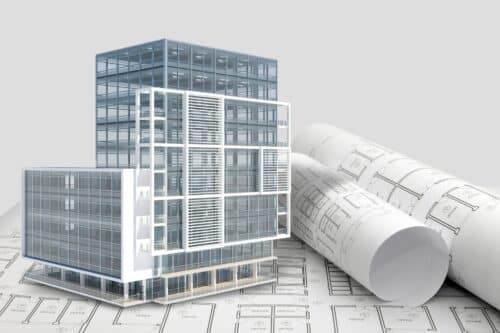-
We’re really happy with the quality and efficiency of service. Maria has made the process of getting the plans for our mid terrace extension feel easy and we’re delighted with the design. Her suggestions will make the living space the best it can be.
Angie Parker – 5* Google Review -
Fabulous service from Elizabeth Anderson of Western Building Consultants. Stepped in when we were having difficulties with another service provider, grasped the project needs quickly and produced a quality proposal in a collaborative, proactive and timely fashion. A really enjoyable process made all the better by Elizabeth’s friendly manner and expertise.
Michael West – 5* Google Review -
“WBC have been professional throughout. Alan Meade in Bath provided a thorough and comprehensive report, identified my repair priorities, explained the technical issues and followed up with very clear and enormously helpful advice as to what I should do next. Would and already have recommended them to others.”
Trevor Bloom -
Western were really professional, quick and went above and beyond to give us the designs we wanted as well as keeping us on track with our building plans. Thanks to James and all the team for the excellent work and affordable price.
Joe gardner 5* Google Review -
Top notch service here from Paul Keegan who was super patient with us and when we finally got access for a building condition survey on our new premises, he went above and beyond the call of duty to get our report back to us over a weekend. Thanks WBC you came up trumps for us.
David Dixon 5* Google Review -
Excellent excellent excellent. I needed a chartered surveyors report for my mortgage application sharpish. WBC sent Jack within a few days of my request and he was thorough, professional and explained everything in detail to me. Highly recommended.
Lucy Moon 5* Google Review -
We want to say big thank you to western building consultants. We couldn’t be happier with everything they’ve done for us.
We are a small local building company that were looking for a similar sized company to work with us on many various projects from loft conversions and extensions to structural works of all sizes.
It’s been a relationship that’s worked great from day one. It’s been over a year now of working with western on at least a weekly basis. Whether its the office staff, architects or structural engineers they’ve been second to none. Always helpful and accommodating even throughout this pandemic which must of been a struggle.
I love that we can offer westerns services along side our own and the feed back we get from all of our customers when they’ve had contact with western is great.
In the 20 years I’ve been a builder this company is the best I’ve used and we will continue to use them for the next 20 years.
Ashley
Tweedy Brothers Total Building Services
Ashley tweedy 5 * Google Review -
Exceptional service provided by Maria Simone; she incorporated as many of our requests as possible when designing a beautiful extension for us despite many limits and delays from the planning office. Her professional, thorough and friendly approach made us feel confident that we were in safe hands and we look forward to working with her and the rest of the team.
Ashley Morris 5* Google Review -
Have received a great service from Jo at Western Building Consultants so far. She is always very responsive, works extra hard for our tight timeline and kept me updated through out the process and was really quick to understand our project objective.
Tina Chang Liu 5* Google Review -
This is the third time I have worked with Western Building Consultants and as usual they have been a pleasure to work with. I dealt directly with Sam and Jo who did the Structural Calculations and the Drawings respectively for my residential to HMO conversion project. They were accommodating, engaging and professional.
I look forward to the next project!
James Scott 5* Google Review -
I had a very positive experience with Western Building Consultants right from the start with requesting a quote from Ebony through to the delivery from Jo. Jo delivered exactly what i needed to a very good standard so much so that i’ve already booked in for another job. I wouldn’t hesitate to recommend WBC to others.
Ria Walton – Google 5* Review -
Our journey with Western Building consultancy so far has been fantastic! Jo’s patience and ability to understand my scribbles and ridiculous ideas made designing our venture fun instead of daunting. Communication is always prompt, professional and most importantly sincere. I’m really looking forward to how the rest of our project progresses!
Katie Parish – Google 5* Review -
I can strongly recommend the one we have just used, they are RICS surveyors and we got a full survey for £600 and it was 42 pages long and very very detailed. Exceptionally impressed after some we have used before. Also very helpful on the phone with questions prior and after survey.
www.westernbuildingconsultants.com
MissCherryCakeyBun – Mums Net -
I have enjoyed working with Western Building Consultants on a complicated project for about 4 years now. During that time they have without fail given me a high level of customer service, being welcoming, responsive and competent.
As a customer I particularly appreciate that WBC are value for money. They also stick to their quotes and don’t add a lot of extras. Help and advice is always forthcoming generally at no extra charge.
Dr Rosemary Geller -
Thank you so much for all your advice today. That was so very helpful, not only with the structure of the property but especially with your comments about the whole set up. I can see that we were within a gnat’s whisker of entering a complete can of worms… Thank you so much for saving us from making a stupid mistake.
Mr McIntyre. -
Thanks to you both your help in this matter – you were both extremely efficient and accommodating (more than I can say about other companies I contacted).
Bob -
Your professionalism has been invaluable, thank you.
Jo Holmes -
Thank you for your extremely comprehensive report. It will be of immense help when deciding on the works we would like to carry out on the property. We have decided to take your advice and move into the property and live in it for a while to assess our requirements.
Trevor Woodyatt -
Thank you for your prompt service, could not have asked or expected more. I note your comments and in an ideal world everything would have been 1.
Will not hesitate to recommend you, and will make a point of letting the estate agent know this too.
Sylvia -
I just wanted to say thank you very much for your thorough and clear report. It is written in an informative and jargon free way which has made a pretty hefty document ultimately digestible and easy to understand.
Nicola Strong -
Hello Kerry, Many thanks for the report and invoice receipt.
Please pass on my thanks to Paul for the survey. In my working life, I read many stock survey reports – I work with social housing providers to set up their asset management strategies – and this was one of the clearest and most comprehensive I’ve seen.
Justin Fisher -
Dear Paul, Thank you so much for your fast response and the detail in your report is very very good and greatly appreciated. Thank you for your efforts.
Ryan & Emma Shore -
Many thanks for your swift and thorough return of this report, we so appreciate you getting this back to us on such a tight turn around this week, and on the first read it seems extremely clear and comprehensive.
Georgina Bolton -
Hi Kerry / Paul, Thanks for sending the survey across.
I’d also like to thank you for your excellent service and professionalism. I considered many surveyors before choosing to proceed with you and it’s clear that I made the right choice. I won’t hesitate to recommend you to family, friends and colleagues in the future.
Max -
“We have commissioned three building surveys from WBC until we found the house that was right for us and all thanks to you”
ANON -
I never expected so much detail, the report was really great and there were things I never even considered, even being in the construction trade
CONTRACTOR, LETTER -
The report was brilliant and went into so much detail, having had reports from other surveyors in the past this report was far superior
ANON, EMAIL -
“Highly recommended. Good customer service over the phone and by email. Very quick: from the initial phone call booking a site visit to me receiving the calculations took only 8 days.”
John Cameron (Google) -
“We used James Dean …Western Building Consultants as an architect. Very good”
SPIKE, BATH MUMS -
“Good surveyors & structural engineers that we used were www.westernbuildingconsultants.com
We were really happy with them, they came highly recommended by several people”
ANON, BATH MUMS -
“Excellent service and help from the initial design/planning stage through to the end of all works”
ANON, BUY WITH CONFIDENCE -
“I can recommend Western Building Consultants. They are great on structural calculations, advice and technical drawings to whatever extent you want. We used them for advice and calcs for taking out our main load bearing wall downstairs. They were recommended several times over when we started looking.”
NAOMI, BATH MUMS -
“Superb, professional, efficient, friendly, positive”
ANON, BUY WITH CONFIDENCE





